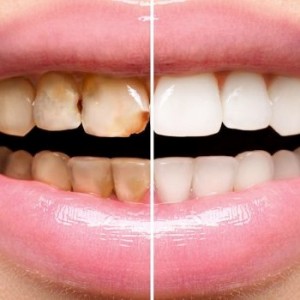
Effect of different cleansing agents and adhesive resins on bond strength of contaminated zirconia
Co-authors: A. Comba, F. Del Bianco
Lorenzo Breschi
INTRODUCTION
The use of zirconia as a material for full crown restorations has increased in the last years thanks to some of its properties like chemical resistance, high fractural strength and biocompatibility. When it comes to indirect restorations, even though the fabrication process has become more and more accurate and precise, the try in procedure is always recommended and necessary. However, contamination with biological agents like blood and saliva, or chemical formulation and mechanical agents can lead to a decrease in the bond strength between tooth and restoration. The research group of Wattanasirmkit et al, from the University of Bangkok, investigated different substances that could alter the zirconia surface and analyzed the effect of three different cleansing agents and two adhesive resins on shear bond strength of surface contaminated zirconia to composite resin. Furthermore, the authors focused on the changing of surface morphology and phase of zirconia at the surface when cleansing agents are applied.
MATERIAL & METHODS
To conduct the study, 110 zirconia specimens were randomly divided into 5 groups according to surface preparation procedures: 1) control group, no-contamination (Group PPC and SPC); 2) Surface contamination with artificial saliva for 1 min followed by silicone disclosing medium under 1kg pressure for 4 min then rinsed with water spray for 10 s and gently dried (Group PNC and SNC); 3) Surface contamination as for G2 and cleansing with 37% phosphoric acid for 20 s, water spray and gently dried (Group PPO and SPO); 4) Surface contamination as for G2 and 3 and cleansing with Ivoclean for 20 s, water spray and gently dried (Group PIC and SIC); 5) Surface contamination as for G2, 3 and 4 and cleansing with 4.5% hydrofluoric acid for 20 s, water spray and gently dried (Group PHF and SHF). After treatment of the surfaces, the authors performed the bonding procedures and the treated specimens were randomly divided into 2 subgroups according to types of adhesive resins selected (n = 10): Panavia F2.0 and Superbond C&B. Shear bond strength (SBS) was performed and data was analyzed by Kruskal–Wallis H and Mann–Whitney U test. The remaining specimens of each groups were kept for SEM and XRD examination.
RESULTS
The statistical analyses of the research conducted by Wattanasirmkit et al revealed that for the variable ‘Surface treatment’ there was no significant differences among groups (p > 0.05), while for the variable ‘Adhesive resin’ there were significant differences between Panavia F2.0 and Superbond C&B (p < 0.05), with significantly higher SBS for Superbond C&B than Panavia F2.0. There was no morphologic changing that could be observed by SEM. The XRD showed little phase transformation when surfaces were contaminated and cleaned.
CONCLUSIONS
The authors concluded that the saliva and silicone disclosing medium contaminated zirconia samples should be cleaned with Phosphoric acid, Ivoclean or Hydrofluoric acid for 20 s prior to cementation with Panavia F2.0. However, the surface cleansing was not necessary when cementation is performed with Superbond C&B.
For additional information: Effect of different cleansing agents and adhesive resins on bond strength of contaminated zirconia.
 Related articles
Related articles
Kuraray Noritake Dental Inc., a global leader in dental material innovation, today launched KATANA Zirconia ONE For IMPLANT at Dentsply Sirona World (DS World).
Products 22 September 2025
Roland DGA has introduced the ZDB-150D-US 3.0 mm roughing tool, developed specifically for full-arch zirconia applications.
This systematic review aimed to provide an overview of zirconia implants as well as regarding the outcome of the implant-restorative complex in preclinical studies.
Products 01 September 2025
Dentsply Sirona Releases Innovative CAD/CAM Zirconia Block and Abutment Resin Cement
The CEREC Cercon 4D Multidimensional Zirconia Abutment Block combines high strength with aesthetics for both hybrid abutments and hybrid abutment crowns.
Rocky diamond bur is engineered to help dentists stay in control when the case is tedious and time is tight
 Read more
Read more
Much like EMTs rushing to the scene after an accident, stem cells hurry to the site of a skull fracture to start mending the damage. A new finding has uncovered the signaling mechanism that triggers...
Products 05 November 2025
SimplyTest has launched a groundbreaking saliva-based test to detect high-risk strains of oral human papillomavirus (HPV), a major cause of oropharyngeal cancers.
News 05 November 2025
Perimetrics, Inc., a dental technology company pioneering quantitative diagnostics, announced today that the U.S. Food and Drug Administration (FDA) has granted clearance for the InnerView...
News 05 November 2025
On October 15, open enrollment for Medicare began nationwide. Hundreds of thousands of seniors in New Jersey will once again face the challenge of finding the right Medicare coverage, including the...
Digital Dentistry 04 November 2025
Digitalisation is an expanding field in dentistry and implementation of digital teaching methods in dental education is an essential part of modern education.















